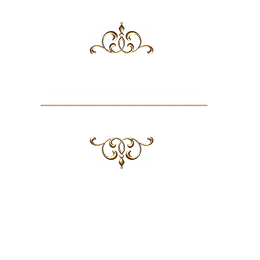CONTACTS
+48883888495 ( whatsapp )
Warsaw Poland
+44 7367 899 788 (Telegram)
United Kingdom, London
+375 44 7484847 (Viber)
Belarus, Minsk
France, Nice, Paris
Email: antiinterior888@gmail.com
antinteriordevelopment@ Gmail.com
Websites: antinterior.com
antinteriordevelopment.com
Opening hours: 10:00 - 19:00

Content Oriented Web
Make great presentations, longreads, and landing pages, as well as photo stories, blogs, lookbooks, and all other kinds of content oriented projects.
Gothic style in the interior.
An article from the Book "Interior Styles with Tatyana Antonchenko" is a large encyclopedia of interior and architectural styles.
Leave your Email
Please leave your details to continue reading.
We do not send unwanted emails
You agree to the Terms of use of your personal data and с Privacy Policy
You agree to the Terms of use of your personal data and с Privacy Policy
If you like the Harry Potter books, if you're into fantasy, and you like European vintage, then my gothic interior design tips are for you.
Let's deal.
From all the theoretical information provided, I have singled out the main, accessible, which I can explain to you in a simple, accessible style.
Brief "biography" of the style:
"Birthday" of the Gothic style, second half of the 12th century. - 15th century
A style of architecture originating in France.
This style of a complex psychological state, it became the embodiment of the entire period of the Middle Ages in the understanding of modern man.
Gothic differs from other styles, having its own incomparable face.
High, subtle beauty and sophistication. Giant openwork towers. In fragile, thin columns, the verticality of structural elements is emphasized.
In the photo, St. Vitus Cathedral in Prague is one of the most beautiful Gothic cathedrals in Europe.
Gothic was also called "Flaming Gothic", because. all the architecture of those times resembled flames.
Another most important distinguishing feature of this style is the stained glass windows.
Pictured is St. Vitus Cathedral in Prague.
Thanks to the amazing stained-glass windows made by more than 20 masters (including the famous modernist Alphonse Mucha), which transform and refract light, the radiance of the sun always “lives” in the cathedral. The stained-glass windows depict pictures from the Sacred history, tell about the creation of the world and the life of the saints.
And here is the Holy Chapel - a Gothic chapel-reliquary on the territory of the former Royal Palace on the Ile de la Cité in Paris. Its stained glass windows are considered the most beautiful in Paris.
Bright, sonorous colors are a characteristic feature of Gothic stained-glass windows. They will transform the windows of a country house, and in a city apartment they will decorate the panels on the doors and wall niches (they must be provided with lights), but not the ceilings: this technique was only used in modern and art deco.
All interior details should contribute to creating the image of an old abandoned mansion. The color scheme is restrainedly dark, using cherry, dark gray, purple tones. Gilded classic frames with patina, an abundance of velvet combined with satin textiles and elements borrowed from palace interiors.
Boards and tiles on the floor. A massive dark board with a relief texture is the best option for residential premises. Embossed floor tiles in dark colors - square or hexagonal - are suitable for a Gothic-style interior.
Wall paintings. Magnificent tiles and statues have come down from Gothic times, but only connoisseurs know about the murals. Meanwhile, they decorated the walls of temples and dwellings.
Large fireplace. It is best to arrange it in a spacious hall. A monumental sandstone portal and a carved wooden frame will decorate both a real firebox and an electric fireplace. Instead of the classic order, the decoration of the "medieval" fireplace should contain Gothic and Celtic ornaments or heraldic emblems.
Chandeliers with wrought iron cornices, on low hangers and stained glass inserts, floor lamps stylized as floor chandeliers (candlesticks) will create a “medieval” atmosphere. Handles and linings made of bronze or brass will give a "castle" look to the door panels.
Massive wooden furniture. Chairs with high backs or stools (including folding ones), painted and ironed chests, massive wooden cabinets (with or without decorative carvings) are the main set of Gothic furniture.
Don't forget a thick canopy bed on four columns - this will be the main piece of furniture in the bedroom. But a large dining table in Gothic times had the simplest look, the main thing is that the countertop is made of solid wood. As an alternative to wooden furniture, chairs and tables on forged (real or stylized forging) frames are suitable. The same goes for stairs.
A set of bedroom furniture "Harrison Canopy" in furniture stores "Kingdom of Sleep".
The Gothic style developed characteristic medieval patterns: the so-called trifolium (shamrock), quadrifolium (four-petal pattern), Gothic "rose" (a circle in which a stylized flower is inscribed). High lancet arches on columns, fantastic animals can be repeated in the carving.
In the bathroom, you can use Villeroy & Boch's new La Diva ceramic tile collection in exquisite and rare shades of pearl and black tulip.
Where the main highlight of the collection is a handmade mosaic panel, inlaid with natural gold and very reminiscent of Gothic ornaments.
Don't you think so?
And here are a couple of interiors that the designers embodied in the Gothic style.
Certificate of Publication No. 29354
When reprinting and quoting an article, the author's indication and an active link to the page are required!
When reprinting and quoting an article, the author's indication and an active link to the page are required!
Continuation of the review of interior styles follows ...
Sincerely yours, Tatyana Antonchenko
Thanks to me and the sources for the information!
Sincerely yours, Tatyana Antonchenko
Thanks to me and the sources for the information!



